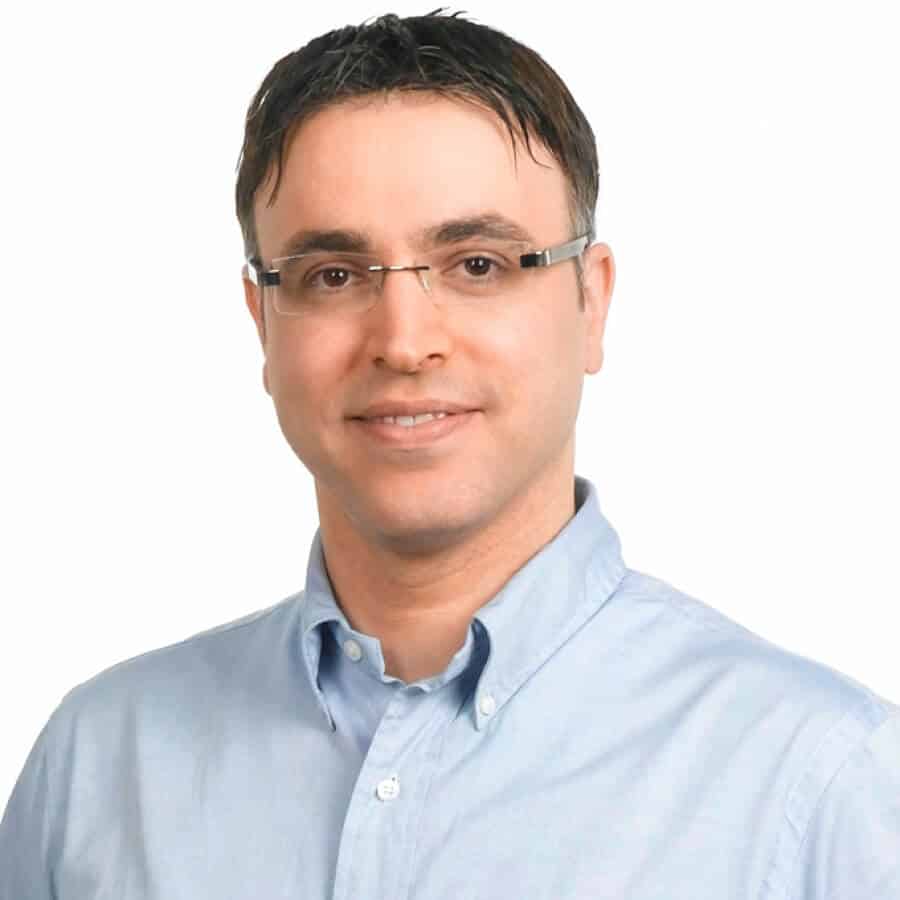Professor Hossam Haick (41), a scientist at the Technion - Israel Institute of Technology, has already made an impact on the world and is an inspiration for today’s youth. Best known for inventing the NA-NOSE breath analyzer, used for sniffing out diseases, this man has already made contributions in many areas of science, including Nanotechnology and biomedical devices. In 2007, Hossam appeared on the list of 50 leading Israelis and four award-winning Israeli scientists. In 2008, Hossam appeared on the MIT Technology Review list of 35 leading young scientists in the world. In 2010, he was named one of the 10 Most Promising Young Israeli Scientists and one of the Young Israelis of the Year. In 2013, he received a listing of the "50 Sharpest Israeli Minds" by the Marker. In 2015 he received a listing among the world’s top-100 most influential innovators in Digital Technology for 2015 by Nominet Trust (London, UK). In 2016, he received a listing among the world’s top-100 most influential scientists in the Medical Field for 2016 by the GOOD Magazine (Los Angeles, USA). Additionally, he has received more than 52 prizes and honors. We at Youth Time are privileged to have an interview with him.
Professor Haick, first of all, congratulations on your invention.
Thank you. This is very kind of you and most appreciated.
Could you explain how the device functions?
Everyone’s breath contains certain chemicals (e.g., alcohols, benzenes, and alkenes). People with early stage disease have different concentrations of these compounds in their breath compared to people who are disease-free. Towards this end, we have built an array of nanosensors that detect biomarkers of certain diseases that already exist or, in other instances, years before they develop. We base the latter assertion on histological studies showing that cells producing these molecules eventually become cancerous. Our nanosensors measure volatile organic compounds released by cells into the bloodstream and then exhaled — a sort of disease breathalyzer. The array consists of two dozen of gold nanoparticles or carbon nanotubes attached to molecules sensitive to various organic compounds such as alcohols, benzenes, and alkenes. The patient blows into the device, and as the breath passes through the nanosensors array, any volatile organic compound(s) bind to their complementary sensors and emit signals. Software probes the pattern of any signals to read the signature of the type and stage of cancer.
One learns that odors have long been identified in humans, using sniffer dogs, for diagnosing medical conditions. In comparison, could you tell us about the efficacy of your invention?
The smell of cancer is far too delicate for direct human perception, but anecdotes of dogs perceiving cancer in their owners have been occasionally reported since 1989, prompting several scientific studies of this issue. Indeed, the canine sense of smell is generally 10,000–100,000 times superior to the human one: more than 800 gene sequences coding olfactory receptors have been identified in dogs. Researchers have addressed canine olfactory detection of cancer in a scientific study, by training a black Labrador retriever to detect esophageal, breast, lung, gastric, pancreatic, colorectal, prostate uterine, ovarian, and bladder cancers as well as hepatocellular carcinoma and cholangiocarcinoma. The dog could detect colorectal cancer with 91% sensitivity and 97% specificity. Remarkably, the dog could also detect early-stage colorectal cancer, as well as distinguish benign polyps from malignancies. Although this is very promising, it’s hard to see dogs and their trainers being rolled out into hospitals for mass diagnosis and/or screening. For that you need devices that obey to all regulatory, ethical and security roles of the healthcare system. And in the last decade, we have devloped devices that can smell cancer / disease by analyzing a patient’s breath in an inexpensive and affordable manner and in a way that both the input and output of the device could be controlled in an easy way and applied to mass production. Our NA-NOSE breathanalyzer has proven its merit in studies covering thousands of people and showing affordability, deliberate control of all components of the devices, long-term sustainability, and most important, connection to the ICT and Big data, so a connection between the user and modern healthcare system could be most efficient. Ultimately, in the future, this technology could serve as a shuttling pad for enabling the prevention of disease before it can occur (primary prevention), reducing the impact of a disease that has already taken hold, and reducing the severity of an ongoing illness that could otherwise have lasting effects. Of course, further intensive R&D have to be done to reach out this vision.
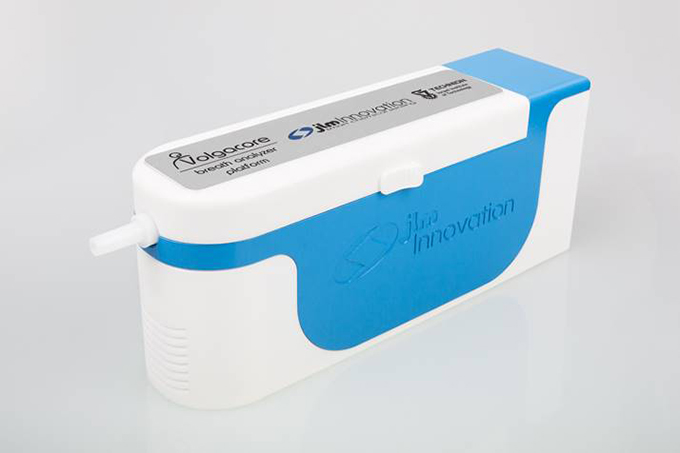
NA-NOSE breath analyser.
Please tell us about the various diseases one can use your device for.
In our most recent study, published in ACS Nano, we have shown a proof-of-concept of the ability of the NA-NOSE to detect and differentiate between 17 different diseases: lung cancer, colorectal cancer, head and neck cancer, ovarian cancer, bladder cancer, prostate cancer, kidney cancer, stomach cancer, Crohn’s disease, ulcerative colitis, irritable bowel syndrome, Parkinson’s disease (two types), multiple sclerosis, pulmonary hypertension, preeclampsia, and chronic kidney disease. The samples were collected from 1,404 subjects in 14 departments at 9 medical centers in 5 countries: Israel, France, the USA, Latvia, and China.
Holistic healers have used odors and aura to determine the condition of humans for ages now. Do you think there comes a point where science meets spirituality?
Alongside the stethoscope and blood pressure cuff, one of the most valuable tools available to the medic is the nose. The earliest of physicians (~400 B.C) are documented as having sniffed the urine and stool of royal infants to detect odour changes that were indicative of disease. Similar tactics continue today with doctors using fruity smells on the breath of diabetic patients to diagnose that they are desperately in need of insulin and foul breath odours to help diagnose some upper respiratory infections. Research in this area has revealed the presence of many compounds on the breath that can indicate the presence of specific diseases, but most create subtle scents that only the best bloodhounds can detect. Now, in our new ACS Nano paper, we provide an important milestone in the proof of this 2400-year old hypothesis and bring it to practical use by the validated development of a device that can do the work the human nose cannot.
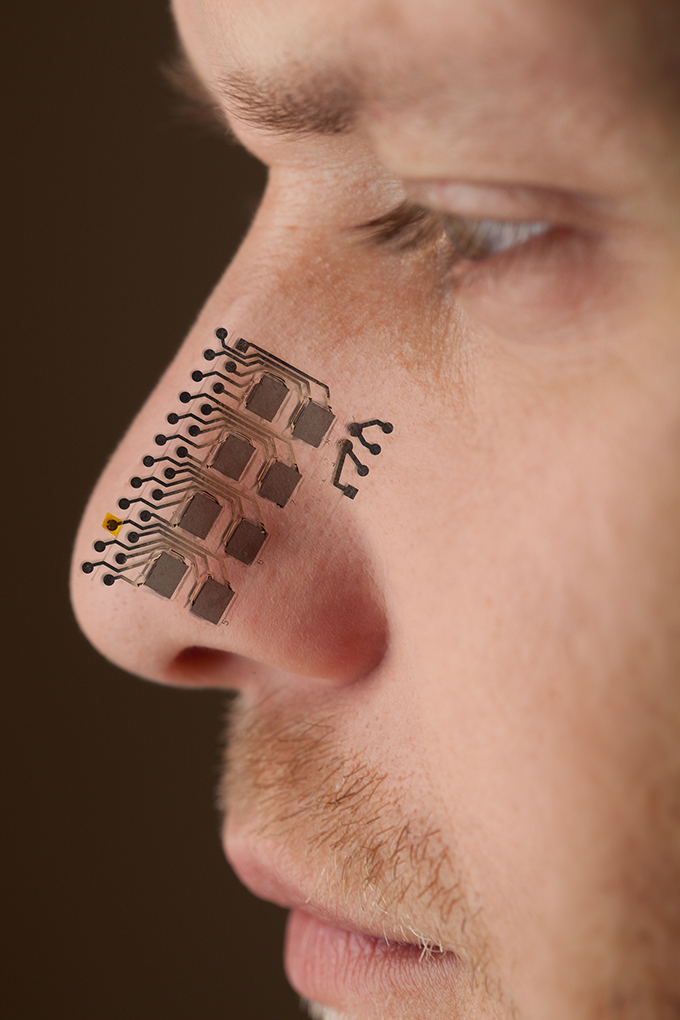
NA-NOSE breath analyser.
How well has the medical community accepted your device?
The medical community has been expressing a great interest in our non-invasive disease detection approach. In many instances, the device’s performance and features have been already compatible with the existing clinical practicing. This has led to tens of clinical collaborations between my group and other groups worldwide, and, more, with several industrial initiatives based on our technology. In other instances, we are working to understand what type of benefits the doctors might see in the solution or are there some obstacles from their perspective. The information received from these kinds of studies is useful in communicating the solution to end users and other stakeholders. The understanding gained provides building blocks for developing such messages / solutions that would be very much appreciated by the target group and other stakeholders.
What made you pursue this particular project, and how long did it take to perfect the device?
When I was studying for my doctorate, a friend of mine was diagnosed with leukemia. It was very painful for me. He did recover, but he went through a very difficult recovery process. I spoke with him daily. I saw his suffering. That was the first time I began to think about diagnosing cancer by means of oxygenating substances that are excreted in a photocatalytic procedure (accelerated by light) and come into contact with cancer cells. In 2006, I came to realize that treating cancer is important, but early detection is not less important, mainly, in the current era. In the case of lung cancer, if its detected early on, the chances of recovery go from 15 percent to 70 percent, even if the patient is managed by the treatments currently available. I started thinking about the possibility to find a scientific solution to sniffing out cancer. There was no evidence at the time that a particular smell is associated with cancer. I thought the organic substances in a person’s breath would let me develop sensors that could diagnose diseases. As the concentration of these substances is very small, 0.1-10 particles per billion, I have utilized the power of nanotechnology to create nanosensors to detect even these minuscule amounts. This has led me to study molecular electronics and to incorporate nanotechnology and sensors into cancer detection. It took almost 10 years to perfect the device and to prove its viability both in lab and real-world clinical settings.
Different doctors in different countries have their traits. Would you like to tell us which are the countries that have begun using your device the most and why?
The device is still in the R&D phase, and all collaborations worldwide (Israel, US, UK, Germany, France, Latvia, China, Spain, Lithuania, Sweden, etc.) are carried out within this framework. It’s important to clarify that bringing this device to the market – as with many other diagnostic methods – should pass through a series of examinations to ensure that a test is reproducible and controllable in mass-production and has a defined accuracy and clinical predictive result. Nevertheless, this information is only obtained through somewhat mundane but comprehensive experimental work. All of this must be done before a test can reach the market after the safety and effectiveness review of regulatory agencies.
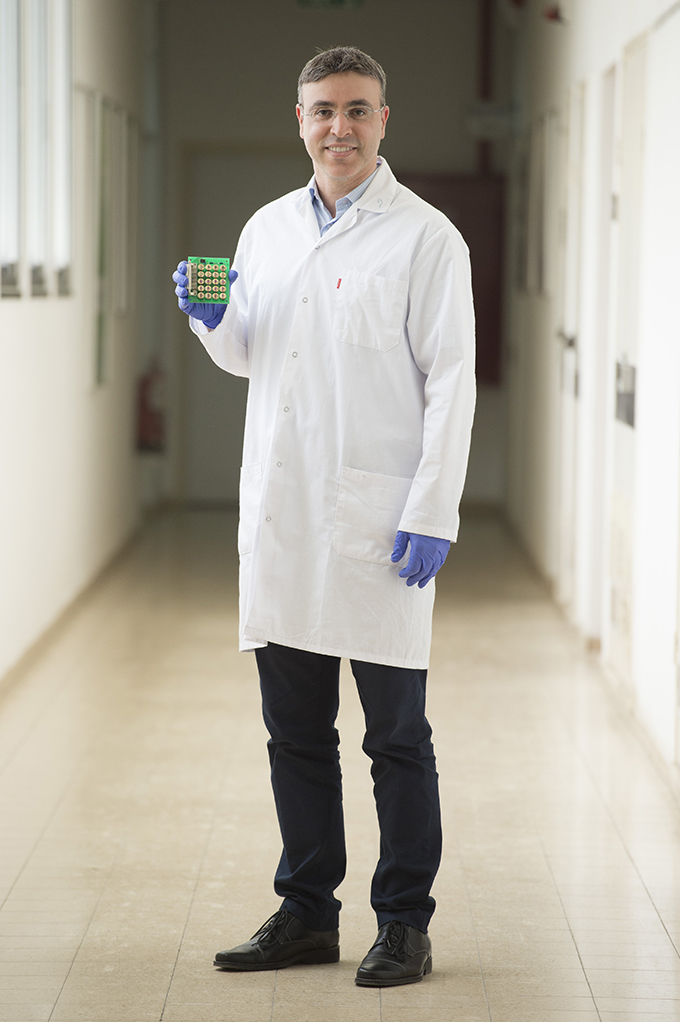
Professor Hossam Haick.
Are there other unusual inventions that can be credited to you?
As a complementary tool for the NA-NOSE technology, my team has developed and characterized sensing smart patches that imitate the human skin, in the sense that they can simultaneously feel pressure (or touch), humidity, temperature, and chemical analytes. These smart patches, which are self-healable (i.e., heal / repair the electronic / chemical / mechanical properties after a cut or scratch in an autonomic manner) can equip computers, robots, and smart objects with the sense of touch, enabling them to “feel” their surroundings. The patented technology has very high tactile resolution and fast readout times that match, and even exceed, human fingertip touch sensation. In addition, compared to other common technologies, the patches require smaller data readout volumes (at least one order of magnitude smaller than currently available patches), low power consumption, low operating voltage (~1 volt) and can be fabricated using low-cost printed electronic manufacturing processes. These features place this technology at the forefront of today’s tactile smart patch market and therefore open new technological and business opportunities, such as touch-sensitive robots and medical devices, prosthetic limbs with tactile feedback, as well as wearable smart patches for sports and rehabilitation. The promising features of this technology for health monitoring were the reason for the collaboration between my group and the Bill & Melinda Gates Foundation, to further develop it to detect infectious diseases in people who live on less than 1 USD/day and have no infrastructure (water or electricity) in their hometowns.
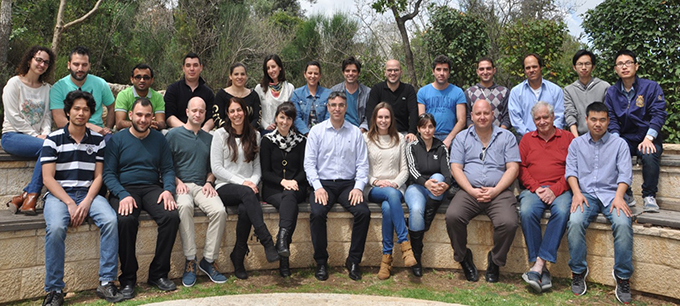
Professor Hossam Haick and his team.
Our readers would like to know more about you. Would you like to tell us about yourself as a person and your background?
I was born in 1975 and raised in the Christian Arab enclave of Nazareth. My father, a Technion graduate, is a lecturer in machine engineering. My mother, who has a degree in history, chose to be a full-time mother for me and my four siblings. When I was young, my family was very poor, because my father was still a student at the Technion. Nevertheless, the priority for my parents was investing in learning, and this is one of main things that has motivated me throughout my career. I started perusing my father’s bookshelf at a young age, and by the eighth-grade I knew my future lay in the sciences of “small” and mysterious objects, which, later on, I realized were called “atoms” and “molecules”.
After graduating from high school, I spent two years working in relatively low-skilled jobs, including as a waiter and factory worker, to support the costs of my upcoming studies in the university and to assist my family. In 1995, I began studying for a bachelor’s degree in chemical engineering at Ben-Gurion University of the Negev. In 1998, I went on to a special direct Ph.D. track at the Technion and then did a two-year postdoc at the Weizmann Institute of Science. My research was on molecular electronics, a futuristic field that studies how molecules can serve as transistors in electronic appliances and computers. I went on from there to the California Institute of Technology (Caltech), where I completed another postdoc in nanotechnology and materials science. It was at Caltech that I began gaining experience in developing chemical sensors and nanodevices.
Towards the end of my postdoctoral research, I got offers from many universities in Israel and abroad hoping to recruit me as a faculty member. Nevertheless, I decided to return back to my own country, because I believed in contributing back to this society. Indeed, since returning home I have visited, on a voluntary basis, different places throughout the country (including primary schools, high schools, and non-profit organizations), sharing advances in science and technology and talking about the need for advanced education and excellence, a few times a week. So far, my voluntary efforts have been appreciated, evidenced by a list of awards and decorations, including the “Order of Merit of Tikun Olam” of the Leo Baeck Education Center, the Al-Khwarizmi Decoration for Educational Contribution for Primary Schools, the YMCA Award, the Lion’s Club Award, and more. One of the major messages in my voluntary work is directed towards the conflicted communities in Israel and abroad. My main non-scientific message is that dismissing prejudices (from both sides), which can be quite paralyzing, can serve as a shuttling pad to get ahead in life.
Today, I live in Haifa with my wife, Rana, a chemist and food engineer at the Israeli Ministry of Health, and our nine-year-old son Fadi and our four-old-year son Eaass.
My academic work includes research and development, teaching, commercialization, as well as voluntary service to the larger society. So far, this work has involved high-quality basic science discoveries, for example: detection of volatile biomarkers that are linked with disease states and understanding the associated biochemical mechanisms; translational research and development such as tailor-made non-invasive sensors that detect disease-related volatile biomarkers; and commercialization of the developed technologies – a few of my patents have already been licensed to three large companies, and three SMEs have been established. Besides these achievements, I have founded and am currently coordinating three consortiums:
- FP-7 consortium (LCAOS; 2011–2015): This consortium includes 4 academic partners, 2 hospitals, and 3 SMEs, which concluded with a stand-alone, on-line system for cancer detection that has been put in more 11 hospitals (up to now) in several countries.
- EuroNanoMed consortium (Volgacore; 2014–2017): This consortium includes 5 academic partners, 3 hospitals, and 2 SMEs. Currently, more than 8 European hospitals use the technology developed in this project by me and my team and collaborators for detection of gastric diseases, on more than 8,000 patients.
- Horizon2020 ICT consortium (SniffPhone; 2015-2019): This consortium includes 4 academic partners, 2 hospitals, 3 SMEs, and one big company (SIEMENS AG Corporate Technology; Muenchen, Germany). This project was selected recently as one of the MOST influential projects in the world for 2015 by the Nominate Trust (London, UK).
Since I joined the Technion in 2006, my colleagues and I have compiled more than 170 publications in top-level journals in the fields of nanotechnology and advanced/applied materials/chemistry. I have regularly been awarded the Technion’s Excellence Award in Teaching (top 4%) as well as the prestigious “Yanai Prize for Academic Excellence”, which is given for exceptional and significant contributions to teaching and academic education. Recently, I designed and developed the first massive open online course (MOOC) in the Technion, and I am the first person worldwide to do this in two languages. This MOOC focuses on the fields of nanotechnology and nanosensors with the main emphasis on their implications and use in diagnosis and treatment of disease states as well as their use in personalized medicine. So far, the course has drawn more than 98,000 participants. This absolutely impressive number is a contribution to the efficient dissemination of specialized knowledge in biomedical science and nanotechnology to a wide spectrum of people in both developed and developing countries, without admission bureaucracies.
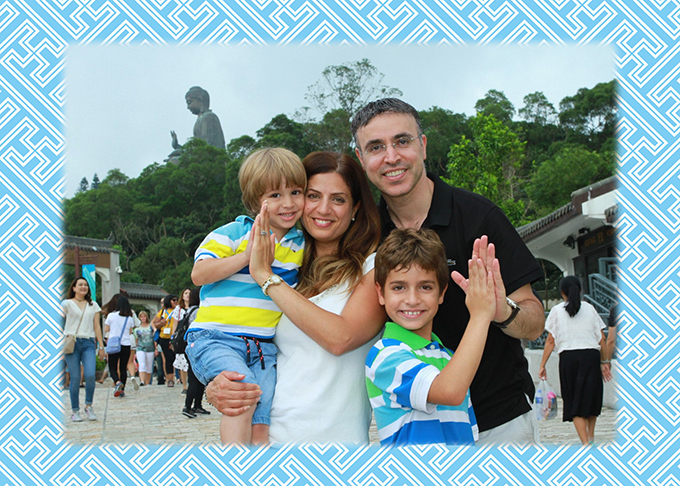
Professor Hossam Haick with his wife Rana and sons Fadi (9 years) and Eaass (4 years).
What do you do when you’re not working?
I read literature in Arabic, English and Hebrew and walk six to eight kilometers (four to five miles) a few days a week. Earlier in my career, I was a gymnast and a karate player with a black belt, but, now my “efforts” are devoted to the sports career of my son, Fadi, as one of the most promising swimmers in the country and Europe.
Let me wish you the best in all your future endeavors, and we hope to hear more about your achievements in the future.
I thank you for your interview, and I hope you and your readers enjoy reading about me.
Photos from archive of Professor Haick
Support us!
All your donations will be used to pay the magazine’s journalists and to support the ongoing costs of maintaining the site.
Share this post
Interested in co-operating with us?
We are open to co-operation from writers and businesses alike. You can reach us on our email at [email protected]/[email protected] and we will get back to you as quick as we can.
